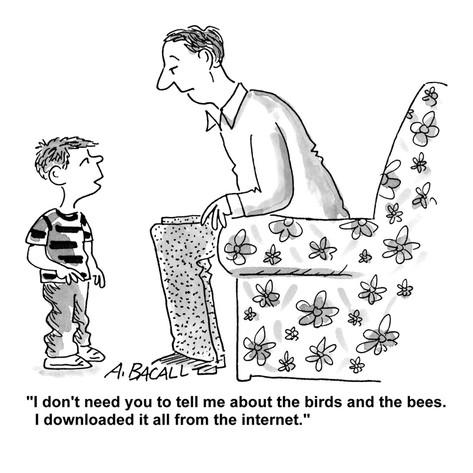Viewpoint: Porn Literacy – The New Term You Need to Know
April 7, 2018
Porn Literacy is just what it sounds like, the ability to understand pornography. It is not a term many people think of considering because society hopes that many people do not have to understand porn because it is not reliable content. This is far from incorrect, “53 percent of boys and 39 percent of girls said pornography was realistic to true sexual encounters” (New York Times). Our children are not receiving comprehensive sex education and relying on pornography to teach them how to understand sex and their personal sexualities.
26 states still do not mandate sex education and 13 require the material be “medically and scientifically accurate” (New York Times.) If we are not going to teach children about sex they will find other outlets to discover the facets of it – cue pornography. Males are usually 13 the first time they see pornography and women, 14. This is the age that most sex education lessons either develop or diminish in the k12 sex education realm (New York Times).
Here is where porn literacy comes in; if a school is encouraging comprehensive sex education then they must also introduce pornography. It is a word that comes with a connotation that will make a room gasp, but it is a word that represents the most famous industry in the world – an industry that we must mold our children to understand and change. Porn literacy teaches children to define pornography terms that are problematic, discuss sexting, sexual/gender/dating violence, and to question the industry as a whole.
We cannot deem pornography a sin to our children because no matter what we alter, the youth will experiment with their sexuality and that is their right to do so. By encouraging them to repress all sexual feelings and deem their curiosity as grotesque behavior, we are telling them to act as if sexuality and sexual pleasure does not exist and it is not valued in society. This is a blatant lie considering the pornography industry brings in 10 to 14 billion dollars in annual sales (Forbes). Introducing the concept of porn literacy to the young adults in your life may be uncomfortable but allowing them to think that pornography is realistic is skewing and setting unachievable expectations for their first sexual experiences.
Professor Tarrant, writer of Pornography 101: Why College Kids Need Porn Literacy Training said, “Pornography both shapes and reflects assumptions about straight masculinity, female sexuality, expectations of beauty, and how women are treated, particularly women of color. Porn has the potential to affect sexual pleasure and the safety of all.”
Tarrant stated, “We must put media literacy at the top of our cultural to-do list because this provides the critical skills that enable adults (young, or otherwise) to identify sexism, misogyny, and racism in all forms of pop culture, including porn. As a generation of porn-watchers comes of age, it is society’s benefit that they are taught a kind of ‘porn literacy’ that encourages an understanding of what constitutes mutually consensual sex in real life.”
Porn literacy does not have to be uncomfortable to talk about because it is instituting things that youths should already know but are failing to learn because of non-comprehensive sex education. You do not have to demonize pornography, you have to teach what is inaccurate about it so people are able to point out its flaws and hopefully turn to feminist or reality pornography and do not mirror the violent behavior that is usually presented. We cannot continue raising a generation of children who either feel wildly awkward discussing the issue or believe that it is realistic and enter relationships having expectations that will never be met. Pornography is a business that will probably never cease to exist but the way we teach porn literacy has to.







